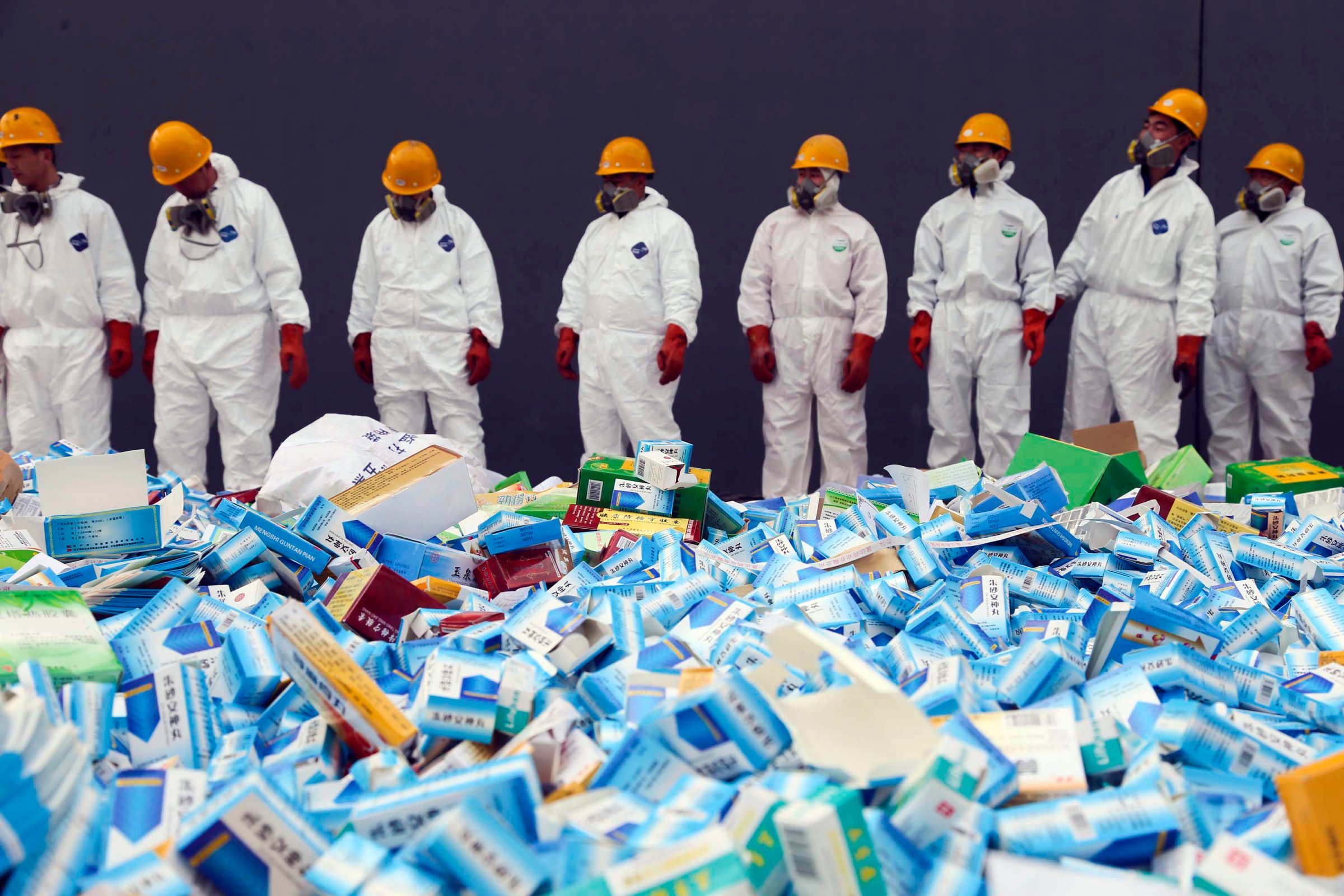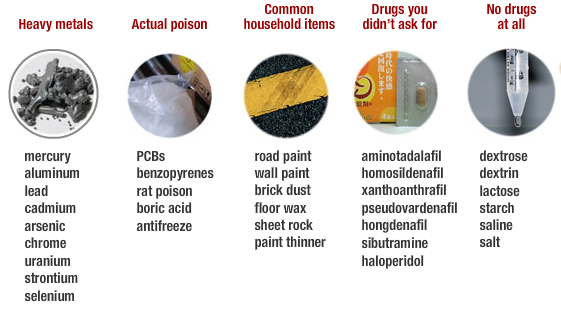
Today the world celebrates Anti-Counterfeiting Day, and by world, we mean a little-known coalition of regulators and lawyers celebrating their quiet battle against counterfeit drug makers.
Here’s a reason for the non-observant to join the festivities: Some $75 billion worth of counterfeit drugs hit the global market each year. These pills often have brand names etched on the outside and chemical imbalances on the inside that are at best, ineffective, and at worst, toxic.
Just how toxic? The Partnership for Safe Medicines, a not-for-profit association of pharmaceutical organizations, has a graphic just in time for the holidays. It shows the full sweep of contaminants that heath officials have discovered in fake pills over the years.

Uranium, of course, is a worst case scenario. Actual contamination rates are hard to measure in an industry that dodges scrutiny for a living. A rough survey by the World Health Organization found that 73% of counterfeit medications contained either the wrong ingredient, the wrong dosage, or no active ingredient, while 8% were laced with impurities and contaminants. Only 15% contained the right dose and the right ingredient. Some sobering figures to contemplate on World Anti—Counterfeit Day, or any day an unaccredited website offers pills at rock-bottom prices.
MORE: The Hidden War: Corporations Fight Against Counterfeiting
More Must-Reads From TIME
- The 100 Most Influential People of 2024
- The Revolution of Yulia Navalnaya
- 6 Compliments That Land Every Time
- What's the Deal With the Bitcoin Halving?
- If You're Dating Right Now , You're Brave: Column
- The AI That Could Heal a Divided Internet
- Fallout Is a Brilliant Model for the Future of Video Game Adaptations
- Want Weekly Recs on What to Watch, Read, and More? Sign Up for Worth Your Time
Contact us at letters@time.com